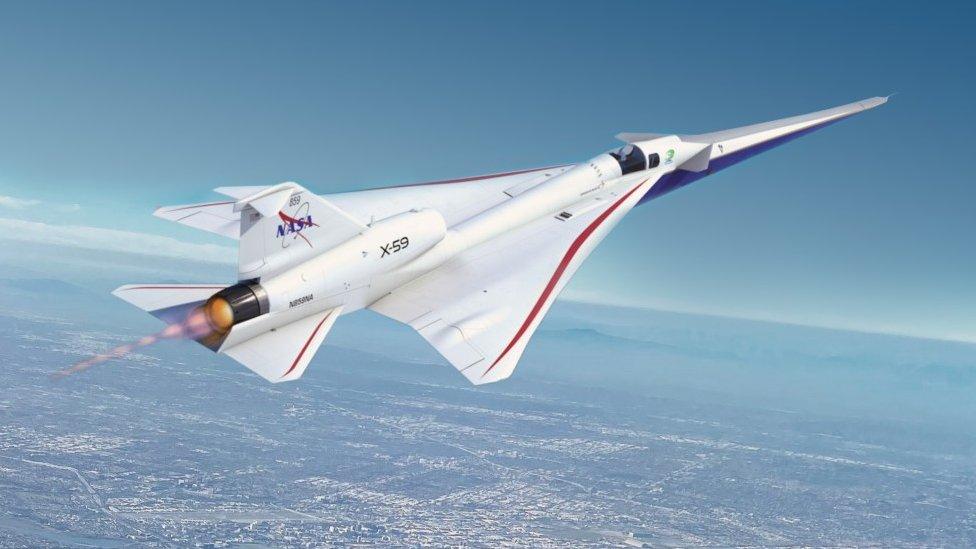Nasa shows off 'quiet' new X-59 supersonic jet
- Published
- comments

Nasa has revealed one of its latest projects - a one-of-a-kind supersonic jet.
The designers say it should be pretty quiet and hope that means it will be able to get around the US ban on supersonic flights over land.
Built in partnership with aircraft-maker Lockheed Martin, the jet is part of the US space agency's mission to find a way for people to use supersonic flights for more ordinary plane travel.
Supersonic flight means planes travel much faster and journeys take less time.
It's hoped the X-59 could fly at 1.4 times the speed of sound - or 925 miles per hour, and experts hope the data it gathers will help develop future quiet supersonic aircraft.

The X-59 is over 30 metres long and a big part of that is its nose, which takes up a third of its whole length.
In order to make it fly even faster, designers have put the cockpit almost halfway down the plane and have also got rid of the forward-facing windows you normally see in planes (and cars).
Instead pilots will see what is ahead of them using a screen in the cockpit.
Concorde is one of the most famous supersonic planes
Supersonic flights aren't usually allowed over land - except for military jets - because of the disturbance that can be caused by loud, startling sonic booms when jets break the sound barrier.
The X-59 is part of Nasa's Quesst mission, which aims to make the booms quieter and convince authorities to allow supersonic flights over land.
A sonic boom is a deep, thunder-like noise that can be felt as a sudden jolt or vibration, as well as heard.
It's often described as sounding like a loud explosion or gunshot.
When any plane flies, it creates sound waves - from things like engine noise and air friction.
Sound waves travel at about 750mph, but once the plane goes faster than the waves do, the waves bunch up and combine to form a shock wave or a sonic boom.
Nasa's Bob Pearce said: "Testing showed us it was possible to design an aircraft that would produce a soft thump instead of a sonic boom. Is that thump quiet enough to allow supersonic flight over land?
"Our laboratory studies would say yes, but the real answer can only be found by engaging the people who would hear it during daily life."
The jet is set to take its first test flight later this year and following that, its first 'quiet' supersonic flight, Nasa said.
The agency added that once test flights had been completed, the X-59 would fly over several cities across the US to collect public feedback on the sound it produces.
